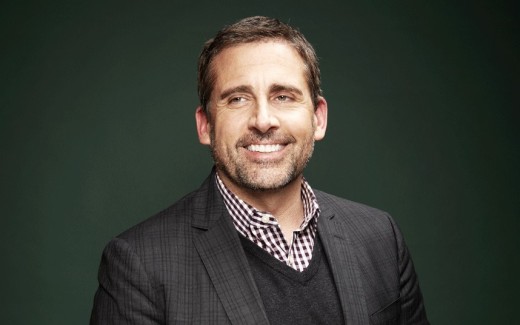Genre: Dark Comedy
Premise: In this “The Burbs” meets “Horrible Bosses” meets “Homeland” mash-up, three middle-aged men suspect their new neighbor of being a terrorist.
About: We’re looking at a sure-fire 2015 Black List entry here. Jeff Lock made his first Black List last year with his meaty absurdist comedy, Beef. Since then he’s obviously been busy. “See Something” hit the town in July with a lot of buzz. And while that buzz hasn’t panned into a sale yet, you get the feeling that has more to do with its box office jinxed genre (black comedy) than the quality of the script. If it does well on this year’s Black List, a sale should follow quickly.
Writer: Jeff Lock
Details: 113 pages – July 13th, 2015 draft
Not that there’s any “best” way to break in as a screenwriter, but if you’re looking for that ideal track, it’s my opinion you want to sneak on the scene with a good but not great script. Sure, it’s bubalicious to get that half-a-million dollar check your first time out. But if you do that, the pressure’s on to deliver on your next script. And if you fail, the industry goes colder on you than Lake Michigan in February.
Jeff Lock did it right. He came on the scene with Beef, a solid but not spectacular script that landed him on the Black List. This allowed See Something to hit the town with a lot of fanfare but no ridiculous expectations. It’s sort of like starting your acting career on one of those good but not phenomenon shows. That’s where you find your Johnny Depps and your Jared Letos.
I liked Lock’s first script, Beef, and mentally tabbed him as a voice to watch out for. What surprised me about his follow-up effort was just how mainstream it was. And I mean that in a good way. See Something definitely embraces a non-PC sensibility, but in the end this exists in the same universe as Horrible Bosses. And that’s not a bad place to be.
30-something Ryan Appleby has just made the transition from working in an office to working at home. He’s not sure how to approach this newfound freedom, and his wife and kid aren’t helping, repeatedly asking him what it is exactly that he does.
To battle the boredom, Ryan hangs out with his two best suburban buddies, Clay and Adam. Adam is one of those fake progressive types who thought buying an African baby would enrich his life, and Clay is that socially unaware hick who thinks that any place that isn’t America is Mexico.
Well, Clay’s about to learn that the new neighbor isn’t Mexican. Pakistani couple Sam and Yasmina look like your typical middle class Americans. But Clay is convinced that because they’re Muslim, they must be terrorists.
When Sam gets a suspicious package delivered to his home, Ryan is curious enough that he joins the trio’s impromptu “Is Sam a member of ISIS?” neighborhood watch campaign. The three begin their investigation by breaking into Sam’s home, move to tracking his car, and eventually come to the conclusion that he’s planning to assassinate American icon, Joe Montana.
While the evidence for terrorist involvement is mounting, the group must weigh the price of freedom against the right to privacy, and that’s something Ryan is never completely comfortable with. Then again, if they can prevent a terrorist attack, isn’t all this moral compass hogwash justified?
See Something had me DYING in the first act. Through the first 30 pages, I was ready to anoint this the best comedy screenplay of 2014 AND 2015. Clay is absolutely hilarious as the dadbod version of Donald Trump: “I know you socialist pansies won’t understand this, but this is America. Other heathen countries in the world are poor, dysfunctional, and living in a big pile of their own shit. (quickly to Adam’s black son) No offense, Abel. (back to guys) They see how awesome America is and they hate us. But, being this awesome comes with a price. You have to watch for all the haters trying to tear you down to get to the top. So we gotta look out for the #1 Emcee in the game… Uncle Sam.”
Even the straight man, Ryan, comes up with some great zingers. His response to Clay’s rant: “You are like some sort of Drake-Rush Limbaugh hybrid.” I’d say I laughed out loud 25 times in the first 30 pages. That is a HUGE number. On the average professional comedy script I read, I might laugh 5 times total. And on the average amateur comedy script, I might laugh once (I’ll be honest, more than often I don’t laugh at all).
But I’ll tell you where See Something (a reference to the government’s message of “If you SEE SOMETHING, make sure to tell the authorities.”) began to lose me. A comedy only works when the plot is working. If the plot is naturally suspenseful and the characters are active and the stakes are high, I laugh at the jokes. Because it all feels real and reality is where the best comedy lies.
But 50 pages in, our guys let Sam know that they think he’s a terrorist. This ripped away the best part of the script, that our trio must sneak around to investigate our potential terrorist without him catching on. Because once he’s onto them, they’re no longer preventing anything. If Sam WERE a terrorist, he now has the option to cancel the mission. Doesn’t this effectively end the story?
The best scene in the script is in that first act when our guys sneak into Sam’s house to look for evidence when he’s out shopping. Why is this a great scene? Because there’s the threat that Sam could come home at any moment and catch them. Once you eliminate the fear of being caught, you eliminate all the conflict and suspense driving the story.
Lock replaces this with a mystery ticking time bomb – the group finds a calendar in Sam’s house with an upcoming date circled. While the looming date does create suspense, it never reaches the previous level of suspense where we were freaked out that Sam might figure out what our guys were up to.
So while the jokes were still sharp, they never hit as hard as they did when I was invested in the story. This is something that comedy writers never consider. If the structure and plot and story aren’t firing on all cylinders, the jokes don’t matter. Jokes only hit when the reader’s invested.
With that said, it’s an easy fix if the producers want to fix it. And I definitely think this should get made. It’s one of the few comedy premises that feels different from all the derivative garbage that’s been hitting the market lately. And I could see top talent dying to play these roles, especially Clay. I guess we’ll have to wait and see what happens!
[ ] what the hell did I just read?
[ ] wasn’t for me
[x] worth the read
[ ] impressive
[ ] genius
What I learned: Beware the THIRD LAME FRIEND. One thing I’ve found with these “three friend” comedies is that the writer always neglects the third friend. The reason for this is obvious. The first two friends write themselves. There’s always the over-the-top guy and there’s always the straight guy (Phil and Alan in The Hangover). The third friend is the only one in the group whose identity isn’t clearly laid out, so writers are never sure what to do with him.
To fix this problem, I advocate the “label” approach. Label your three friends. So here, Clay is the over-the-top racist. Ryan is the sensible grounded one. Now do the same for the third character. The Hangover is one of the rare comedies that did this well (Stu was the easily-freaked-out pushover). Once you’ve labeled your character, you can focus on demonstrating their identity on the page. But if you never label them and instead write the character on “feel,” I guarantee the character will feel mushy. Adam wasn’t the worst version of this problem. The Ned Flanders label helped a bit. But there was something mushy about his identity that never allowed him to hit as hard as Ryan or Clay. A clearer label at the outset would’ve helped.



